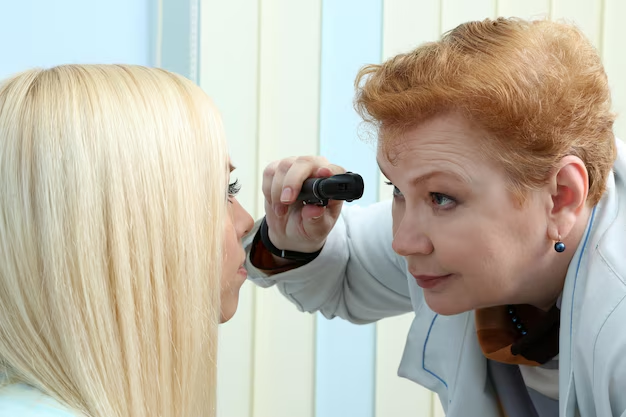Understanding Cataracts: What You Need to Know About Cataracts of the Eye
Imagine viewing the world through a foggy window, where everything appears blurry and colors seem dull. For millions of people globally, this isn't a metaphor—it's a daily reality because of cataracts. Cataracts, prevalent and often misunderstood, are a significant concern, particularly as they relate to aging. Let's delve into what cataracts are, their causes, symptoms, and how they impact everyday life.
What Are Cataracts?
Cataracts refer to the clouding of the eye's natural lens, which lies behind the iris and pupil. This clouding can disturb the eye's ability to focus light, and over time, can lead to vision impairment. For many, recognizing and understanding cataracts is the first step toward seeking effective management options.
How Do Cataracts Form?
The lens of the eye is primarily composed of water and protein. As we age, some of the protein can clump together and start to cloud a small area of the lens. Over time, this clouding may grow more dense, making it increasingly difficult for light to pass through the lens. This process can intensify and affect more of the lens, leading to the symptoms many people experience with cataracts.
What Causes Cataracts?
Cataracts predominantly develop due to aging. However, several factors can contribute to or exacerbate the condition:
- Aging: The most common cause, as protein structures within the lens alter over the years.
- Medical Conditions: Such as diabetes, can increase the risk.
- Lifestyle Factors: Smoking, excessive exposure to UV rays, and a poor diet can all influence development.
- Injury: Injuries to the eye can accelerate cataract formation.
- Medications: Certain long-term medications, like corticosteroids, can lead to early cataract formation.
Signs and Symptoms of Cataracts
Cataracts often develop slowly and painlessly, meaning that symptoms can go unnoticed at first. However, as they progress, certain signs become more prominent:
- Blurry Vision: A progressive cloudiness or blurred vision.
- Diminished Color Perception: Colors appear faded or yellowed.
- Glare Sensitivity: Increased sensitivity to light and glare, particularly with nighttime driving.
- Double Vision: Seeing double images, which isn't corrected with changes in prescription lenses.
It's crucial to pay attention to these symptoms, as they can significantly impact daily life activities like reading, driving, and recognizing faces.
Types of Cataracts
While most people believe cataracts are a singular condition, there are several types based on location and cause:
Nuclear Cataracts: This type affects the center of the lens and is often associated with aging.
Cortical Cataracts: These form in the lens cortex, which surrounds the central nucleus.
Posterior Subcapsular Cataracts: These occur at the back of the lens and often develop faster than the other types.
Congenital Cataracts: Present at birth or develop during childhood.
Understanding the type of cataract can assist healthcare providers in managing the condition more effectively.
Diagnosing Cataracts
If you suspect you may have cataracts, a comprehensive eye exam is essential. Eye care professionals use several methods to confirm a diagnosis:
- Visual Acuity Test: Measures sight clarity at various distances.
- Slit-Lamp Examination: Provides a magnified 3D view of the eye.
- Retinal Exam: After pupil dilation, the eye's retina is examined for signs of cataracts.
These tests are painless and offer a clearer picture of your eye health.
Management and Treatment Options
While surgery is the only effective treatment to remove cataracts, various strategies can help manage symptoms and improve quality of life:
Non-Surgical Approaches
Before considering surgery, some lifestyle adjustments and visual aids can improve sight:
- Stronger Eyeglasses: Updated prescriptions can help with interim vision improvement.
- Magnifying Lenses: Useful for reading small print.
- Increased Lighting: More lighting or specific lamps for clarity.
- Sunglasses: Polarized sunglasses can help reduce glare outdoors.
These methods don't stop cataracts but can mitigate symptoms.
Surgical Interventions
When cataracts begin to interfere substantially with quality of life, surgery becomes an option. This procedure involves removing the clouded lens and replacing it with an artificial one. Cataract surgeries are among the most common and successful procedures worldwide.
What to Expect from Cataract Surgery
- Pre-Surgery: Discussions about lens types and what to expect.
- During Surgery: Local anesthetic is used, and the surgery typically takes about 30 minutes.
- Post-Surgery: Recovery involves eye protection and a follow-up regimen of drops.
Most people experience significant improvement in vision post-surgery.
Living with Cataracts
Living with cataracts can be challenging, but there are strategies to adapt:
- Routine Check-Ups: Regular eye exams to monitor progression.
- Adjusting Activities: Modifying activities to lessen eye strain.
- Diet and Supplements: Emphasis on a diet rich in antioxidants, which may support eye health.
- Support Groups: Engaging with others facing similar challenges can offer emotional and practical support.
Key Takeaways (🔍)
Practical Tips for Managing Cataracts:
- 🕶️ Use Quality Sunglasses: Protect eyes from further UV damage.
- 💡 Optimize Lighting: Increase lighting indoors to reduce strain.
- 👓 Keep Prescription Up to Date: Regular visits for optimal lens prescriptions.
- 🥦 Maintain a Healthy Diet: Focus on nutrients that support eye health, such as Omega-3 fatty acids and antioxidants.
- 🗓️ Schedule Regular Eye Exams: Keep track of your eye health with professional check-ups.
Adjusting to life with cataracts involves awareness, adaptation, and the willingness to explore treatment options.
Understanding cataracts is essential for those affected and their loved ones. By recognizing the symptoms early and seeking appropriate management, individuals can maintain their quality of life and continue experiencing the world with enhanced clarity and focus.
By taking action and remaining informed, dealing with cataracts doesn't have to mean the world takes on a permanent blur. Instead, it's an invitation to see more clearly.
